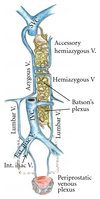step1 must know stuff Flashcards
which one is the small intestine (jejunum), why?

X = because feathery appearance
which is d/t larger surface area for absorption
Which cranial nerves are involved in the pupillary light reflex
II, III
normal PaO2
75 - 105 mmHg
What is non-maleficence?
first do no harm. ex: if risks > benefits, do not prescribe medication
Which coronary artery supplies the AV node?
is this dependent on dominance?
posterior descending artery
Yes- it’s dependent on dominance
Which type of leukemia has auer rods?
AML
antidote for atropine overdose
physostigmine
ANP is released in response to _________ and leads to _______?
released in response to stretched cardiac myocytes in the atria (increased blood volume)
it acts via cGMP and causes vasodilation and decreased sodium reabsorption
How does the level of glucose change in CSF analysis in a bacterial infection vs viral?
Viral –> glucose is normal
Bacterial –> glucose is decreased (bc bacteria like to eat glucose)
normal A-a gradient
< (age / 4) + 4
i.e. 40 yo –> normal A-a = less than 14
FEV1/FVC in COPD increases or decreases?
decreases
Schizoaffective disorder vs MDD/Bipolar with psychotic features
Schizoaffective– must have >2 weeks of psychotic symptoms WITHOUT a mood episode
or else it’s mood disorder w/ psychotic features
normal PTT?
25 - 40 seconds
MCC of bloody nipple discharge?
Intraductal papilloma -benign -typically presents with no lumps or skin changes -also the MCC of nipple discharge in general (bloody or serous)
Major virulence factor of strept pneumoniae and its function
polysaccharide capsule
–> prevents opsonization and phagocytosis
Antidote for Neuroleptic Malignant syndrome
Dantrolene (to decrease muscle contraction)
Bromocriptine (dopaminergic)
the cardiac index parameter of shock is another way of saying…..
cardiac index = cardiac output (= LV output)
Which type of study design measures odds ratio?
Case-control
(CONTROL the CASE in the OR)
- like opposite of RR– which looks at odds of developing dz
Odds ratio looks at diseased patients to see if there is a correlation with last exposure
OR = patients with disease are 3x more likely to have an exposure history
presence of an opening snap on cardiac auscultation indicates which valvular defect?
Mitral stenosis
(decreased interval from S2 to OS indicates increased severity of dz)
Which type of observational study design uses a washout perior between treatments?
crossover study
(note- do not confuse with cross-sectional study)
Where is the T-cell zone in a lymph node
paracortex (region between follicles and medulla)
note- this is the zone that enlarges (paracortical hyperplasia) in extreme cellular immune response (viruses) causing lymphadenopathy

How would a dysfunction of sertoli cells in a male child affect the levels of: testosterone LH FSH Inhibin
Testosterone and LH levels would be normal (would be affected by leydig dysfunction) Low inhibin High FSH (d/t no negative feedback from inhibin)
What happens the murmurs of MVP and HCM with the maneuvers of:
passive leg raise
squatting
valsalva
passive leg raise and squatting: murmur decreases in intensity (d/t increased left ventricular blood volume)
with valsalva: murmurs will increase in intensity (d/t decreased preload –> decreased LV volume)
Rhabdomyolysis can lead to acute kidney injury, which type/mechanism?
Acute Tubular Necrosis
(in rhabdo, nephrotoxic myoglobin is released and damages kidneys –> loss of tubular epithelium – see granular muddy casts on urinalysis)






























































































































































